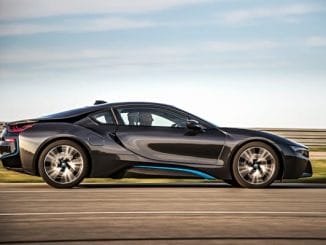For the first time, a hybrid engine is available on the Ford F150. This turns the EcoBoost idea into what Ford is calling PowerBoost. Is it worth it? Does it have the credentials to compete in the light duty truck arena?
This is really the essential question when it comes to any hybrid or electric vehicle. We may want to support this technology, but will it support us when we need to tow or carry a huge payload? Then there’s the question of how much gas does it really save? This truck may have the answers.
The Capability Question
Ford has taken its 3.5-liter V6 and outfitted with an electric motor and other hybrid components. This allows the new hybrid truck to boast best-in-class horsepower as well as best-in-class torque.
The hybrid Ford F150 produces 500 horsepower at up to 6,000 rpm. That’s 100 horses more than the regular 3.5-liter Ecoboost V6. The hybrid produces an even more impressive 570 pound-feet at 3,100 rpm. That’s 70 more than the 3.5-liter Ecoboost V6. So, there definitely is a boost to the power.
Next, strength is a must-have for this class. If we were picking a truck strictly on the numbers, the Ford Hybrid isn’t a slouch, but it isn’t the absolute top Ford. The hybrid has a tow rating of 11,000, 12,400 or 12,700 pounds. Ford’s meatiest Ecoboost engine can pull up to 13,100 pounds.
Payload is just over 1800 or 2,000 pounds, depending on which configuration of truck you get. The hybrid can be beat on payload by the 3,5-liter Ecoboost, but that requires a heavy duty package that isn’t available on the hybrid.
So, in answer to the capability question, the Ford hybrid seems as good or better than anything else in the stable.
Fuel Consumption
The PowerBoost engine is mated to a special modular hybrid transmission. This 10-speed is even more nuanced than the regular 10-speed automatic. Fuel is a regular unleaded gasoline, keeping costs down compared to other choices.
The hybrid 4×2 earns 25 miles per gallon in cities and 26 miles per gallon on the highway. That’s 25 combined. The city mileage is, of course, the focus. That’s anywhere from 5 to 12 miles more per gallon, depending on the rival truck. The 4×4 hybrid earns 24 miles per gallon in the city, still claiming a 4 to 11 miles per gallon margin over competition.
To put it in perspective, the Toyota Tundra can tow the same as this new Hybrid Ford. It only earns 15 miles per gallon in the city and 17 miles per gallon in the city. That’s about a $4,500 difference in operating the two trucks over five years.
When you consider that this hybrid can do the job of other trucks, it seems that the Ford F150 3.5-liter PowerBoost may actually be in the strongest position of any hybrid vehicle today. The driver gets performance, the worker gets capability, and the owner gets the fuel savings. Since most of the time, those three people are really one. It seems like a good deal.





